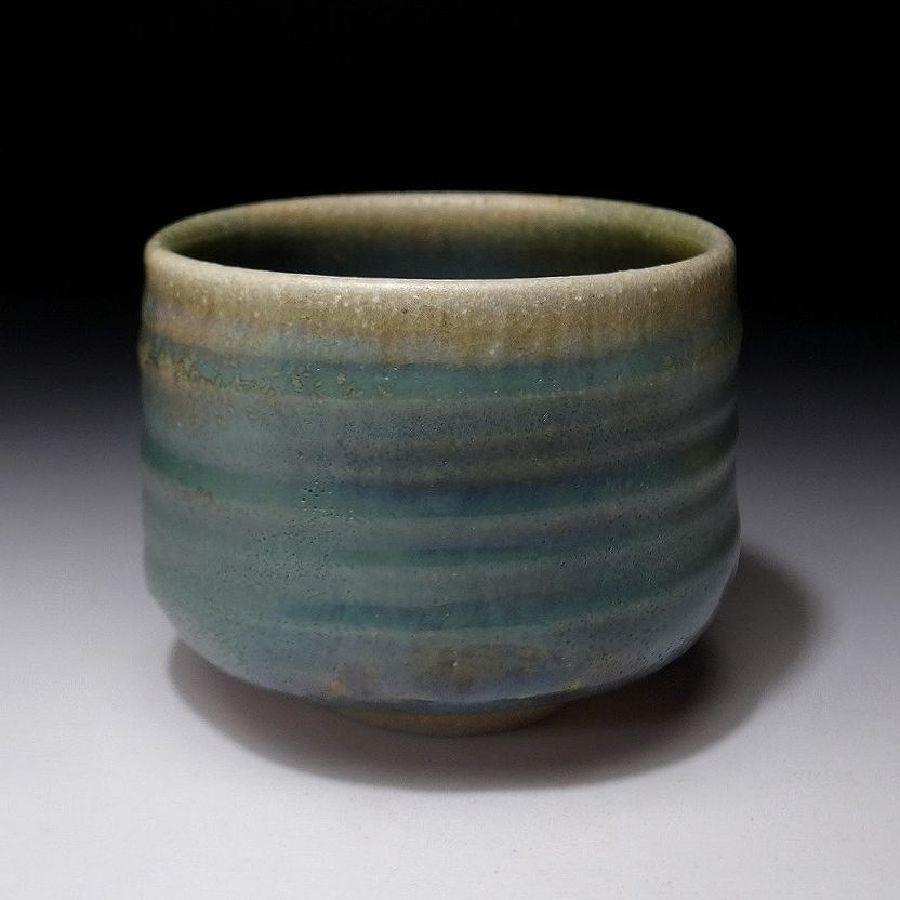
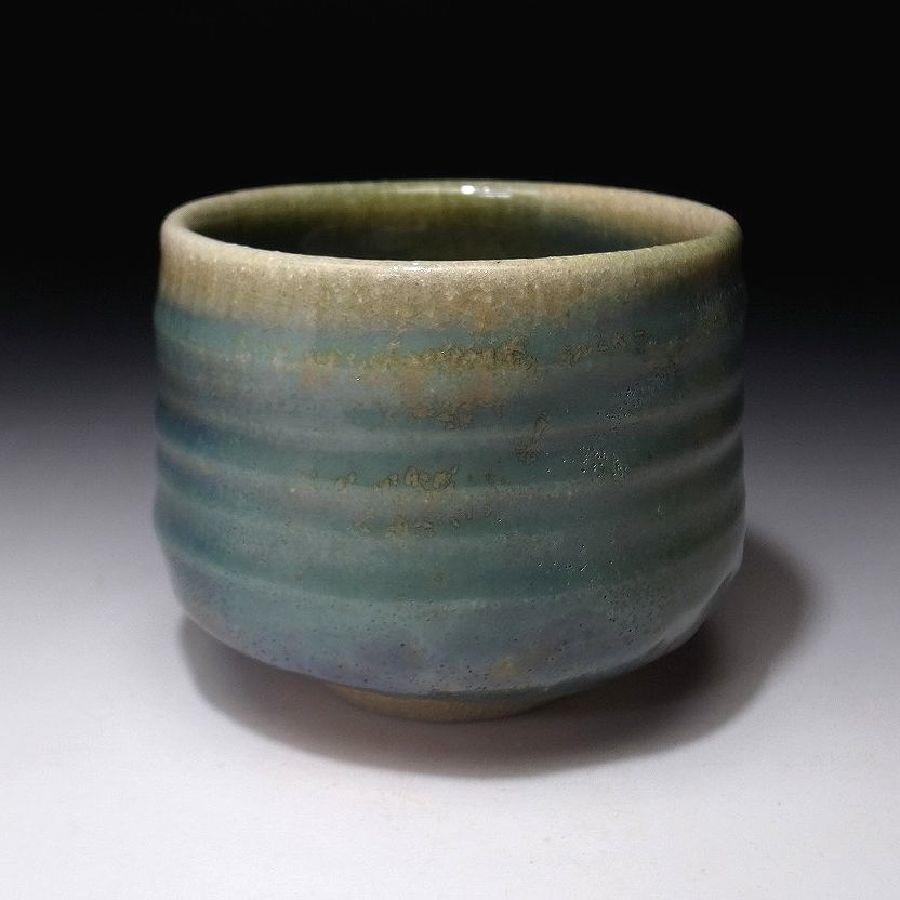


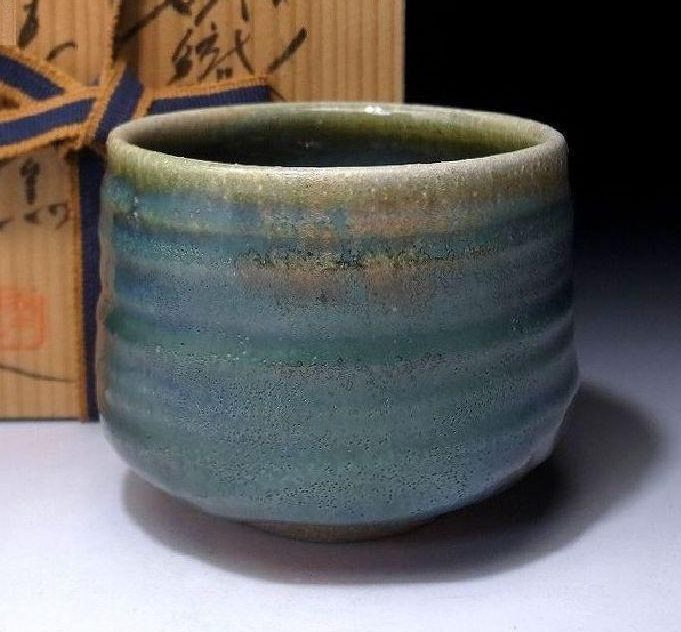
Potter: Tatsuo Ueda
Approximate size: W4.1″ by H3.5″ or 10.3 by 8.8 cm
This chawan or tea bowl was made by Tatsuo Ueda (1949-). The chawan has a deep and auspicious green glaze that is darker in some spots and has a very finely detailed and varied surface. The glaze also appears to have been one with a fluid nature and tendency to droop (with more factors and risk the glaze and outcome becomes harder to control). The glaze is a calm diffused green colour with much variation and small details. The green that fluxes to deep blue that is somewhat transparent nearing the rim, here the clay partly comes through.
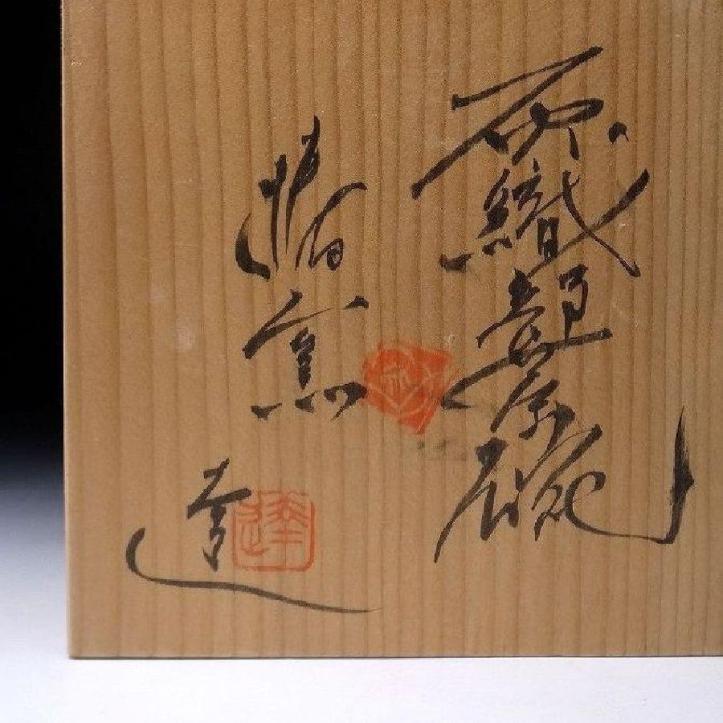
This glaze is very different from the typical green which is one of the characteristics of Oribe pottery. However with the description on the storage box lid in mind, we are assured that the work, the choice of glaze and delicate shape were conscientious choices.
原織部茶碗
Rough translation of the calligraphy on the lid
Gen Oribe Chawan
Original Oribe Tea Bowl
Seal (Middle)
undecipherable 窯
gama or Kiln
Signature,
達 - Tatsu
Seal
達 - Tatsu
This Tatsu or 達 most likely refers to Tatsu of Tatsuo 達夫
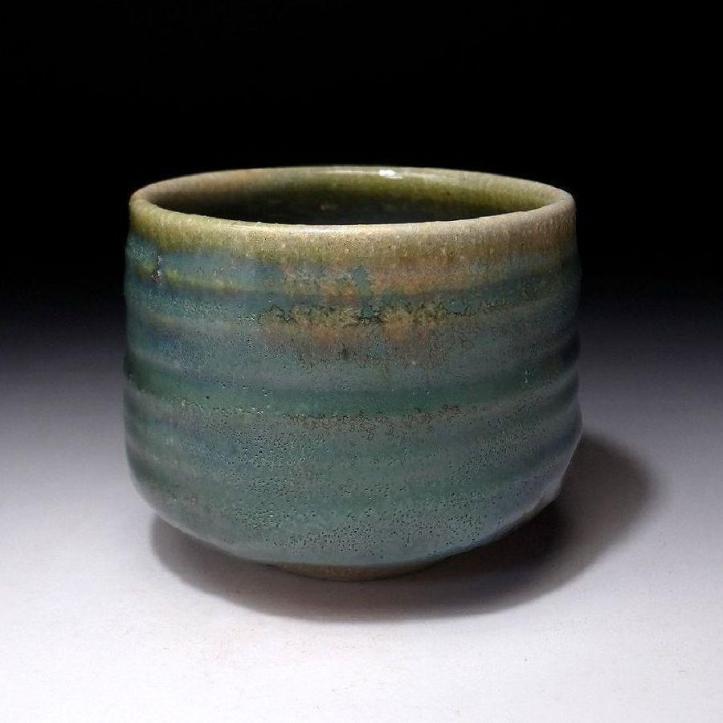
Oribe is a visual style named after the late 16th century tea master Furuta Oribe (1544-1615). It’s most often seen in pottery, but extends to textiles and paintings. Oribe was of the Bushi class and not a potter however, he also (like many other influential figures in Japan’s art history), was something akin to an art director or designer. He embodied the spirit of wabi tea so completely that he was able to give it form in a truly new and unique vision. Boldly formed, often intentionally distorted chawan, decorated with green, black and brown glazes and abstract designs appeared on the Tea ceremony scene in Kyoto.
This is a finely proportioned chawan with a character of its own. Signed by the potter next to the koudai and there are no chips or cracks. Condition is in excellent. Comes with the original quality paulownia tomobako, storage box with kiln stamp and calligraphy on the lid plus a pamphlet about the potter.
SOLD
Thank you very much!
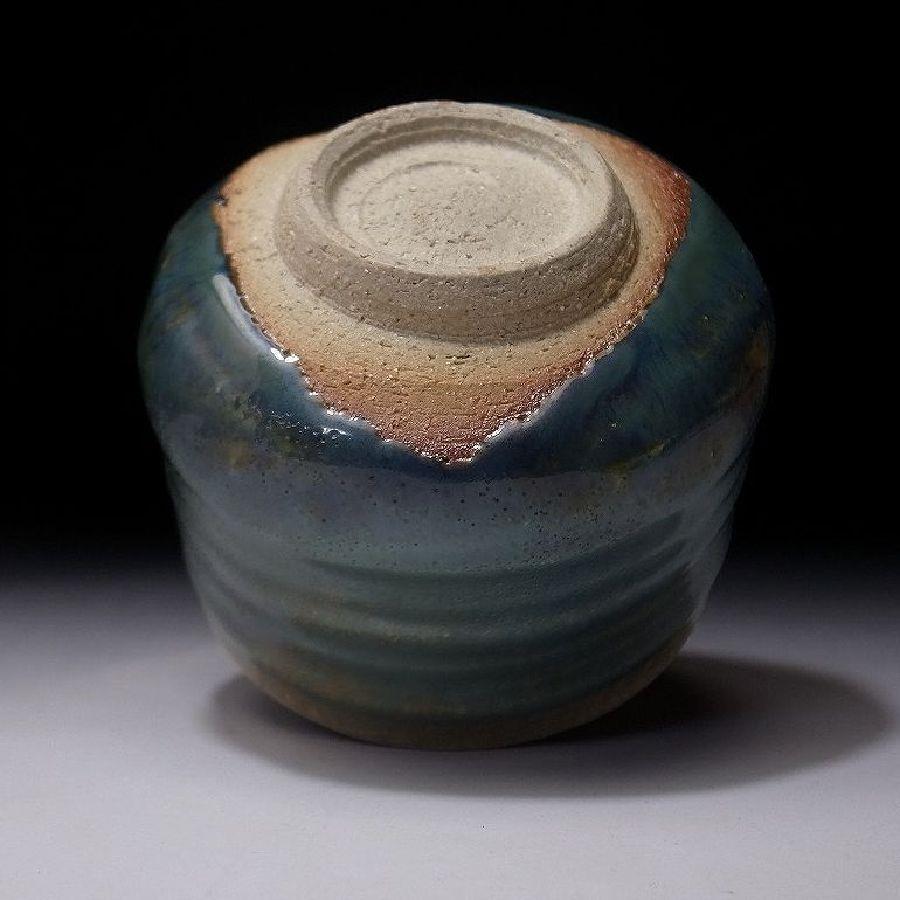
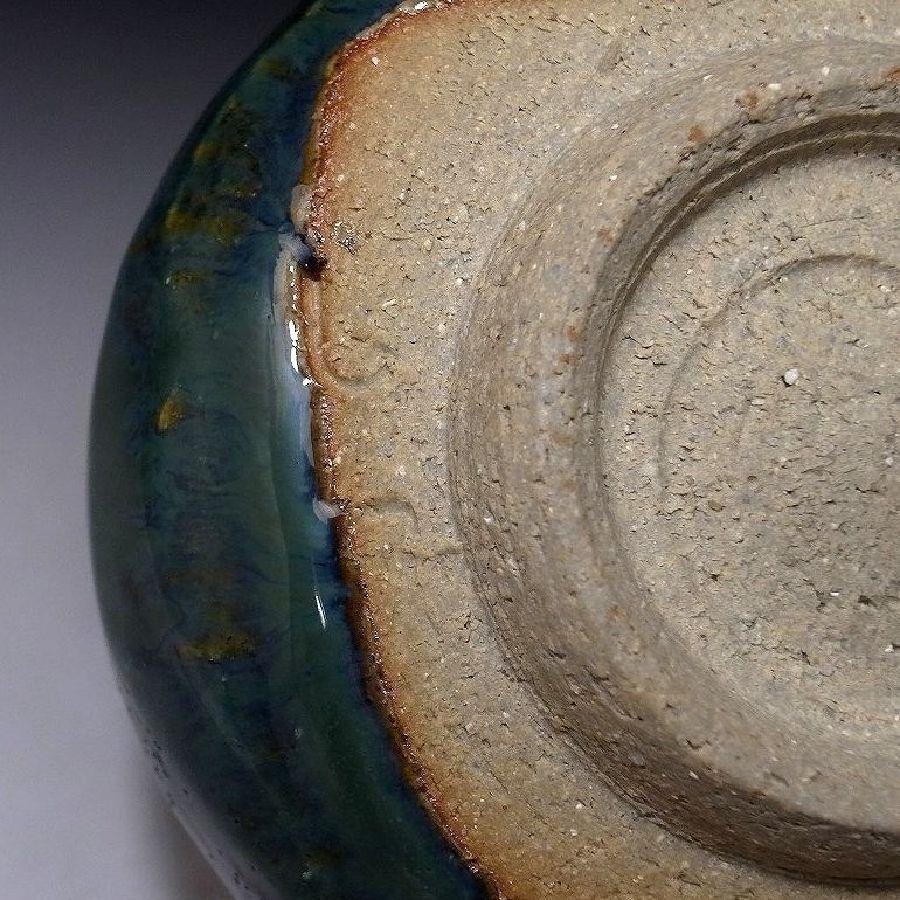
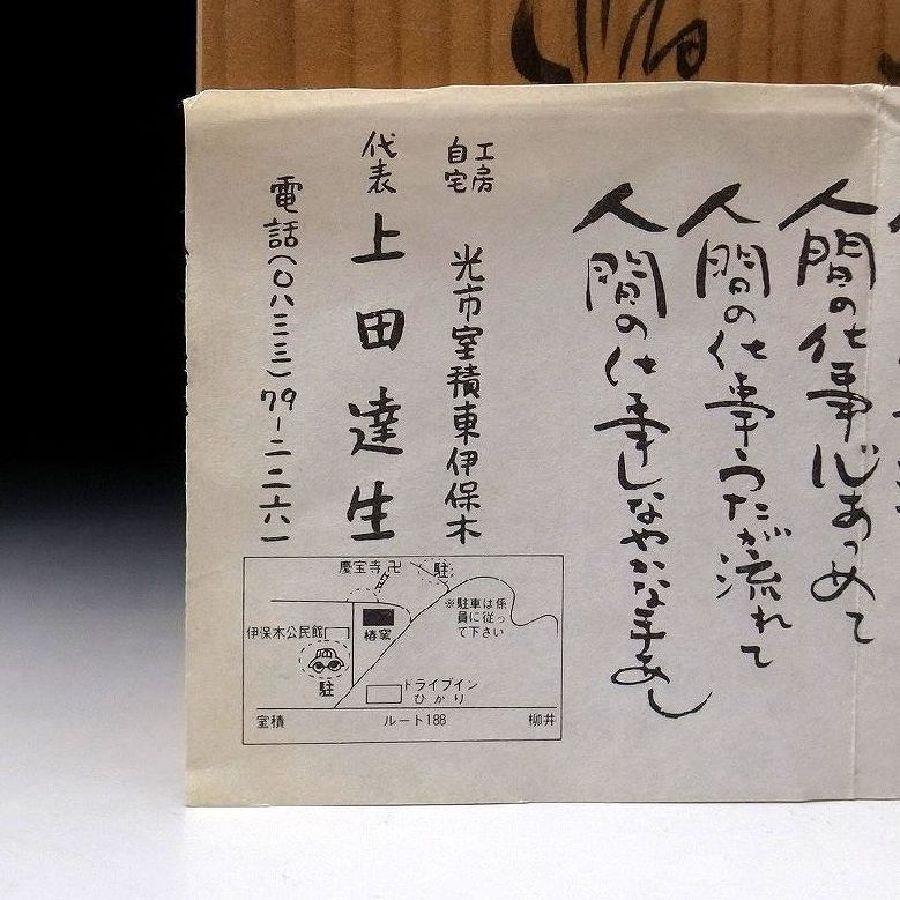
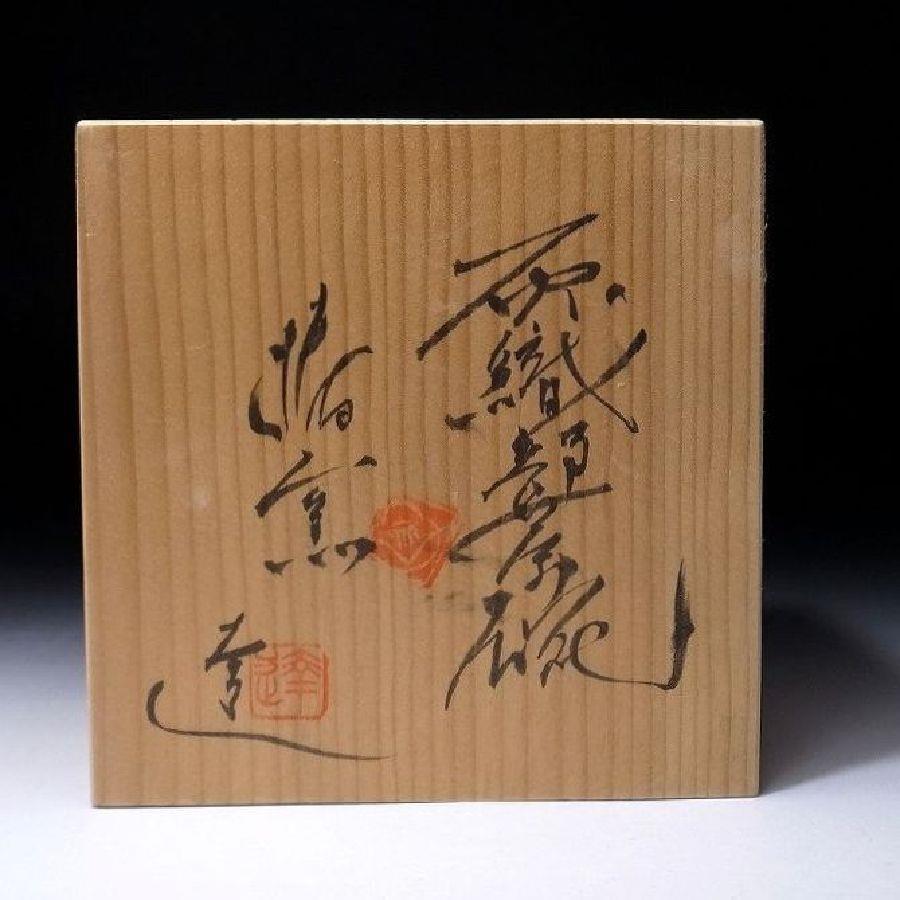
The motifs, taken from nature or other decorative patterns such as textiles, were ground-breaking in their bold informality. Casting aside Korean and Chinese influences, they were also entirely Japanese. It must have been this recognition of a new Japanese aesthetic that caused tea devotees to cherish Oribe ware. Its ability to capture something of the artistic and spiritual soul of Japan quickly spread throughout the country, and its mass popularity continues to this day.
